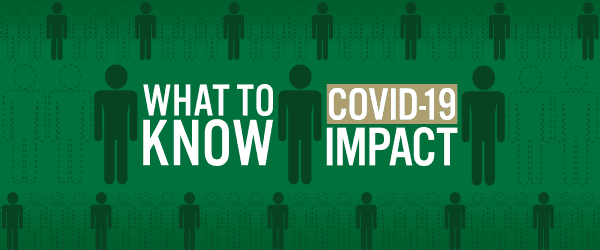Working with social distancing

 The strong necessary measures to stem the spread of outbreaks like COVID-19 include the practice of “social distancing” and avoiding close contact with others, as well as large gatherings. While effective, this measure also brings challenges, particularly in the area of mental health. UNC Charlotte social work professor Sonyia Richardson discusses the impact of social distancing and shares recommendations for the days ahead.
The strong necessary measures to stem the spread of outbreaks like COVID-19 include the practice of “social distancing” and avoiding close contact with others, as well as large gatherings. While effective, this measure also brings challenges, particularly in the area of mental health. UNC Charlotte social work professor Sonyia Richardson discusses the impact of social distancing and shares recommendations for the days ahead.
What are the challenges that come with social distancing?
It is difficult for people to be isolated because as human beings we thrive on social connections and relationships with others. Experiencing isolation, even for brief periods of time, can fuel acute loneliness or negative emotional experiences or reactions. For many of us, our daily interactions consist of being around numerous people at work, home, gym, local grocery stores, churches, and/or at our children’s schools and sporting events. To drastically go from these interactions with literally dozens to hundreds of people daily to very limited interactions, can be a difficult adjustment for us mentally, emotionally and socially.
How does the effect change over time?
Over time, you will learn how to adjust to this new daily routine and social distancing. As you begin to settle into your new norm, you will develop routines to support ongoing social connections and relationships with others despite the physical distance. For example, you may find yourself spending more time on the phone speaking to family, friends, colleagues or engaging more in social media. These strategies may assist with your adjustment and developing your new norm. On the other hand, if you are finding that you have more prolonged negative reactions to the isolation, you may find yourself dealing with the negative effects associated with loneliness and might wish to seek help.
What can be done to mitigate the impact?
It is going to be important for people to learn how to maintain physical distance from others in public settings while still managing to maintain personal and social connections. The difficulty lies in the notion that mentally, as we begin to physically distance ourselves, we sometimes inadvertently minimize or reduce close relationships with others. We will have to reprogram ourselves on how to maintain connections with others from a distance. If you find yourself becoming robotic with others during this transition period and maintaining very rigid boundaries, it could be that you have reduced your personal and emotional closeness as a result of the physical distancing. Strive to be emotionally close and connected while at a physical distance. This is the overall goal during this period of social distancing.
How can we be compassionate while also staying safe?
Compassion is grounded in having a general concern for the well-being of others, particularly as they are experiencing difficult circumstances. During this time of expansive change across the country, it is important that we focus on showing compassion to others while not compromising overall safety. For example, as an owner of Another Level Counseling and Consultation, we have begun to offer telehealth services for individuals in this region to help increase access to services and assist with adjustment-related stress. As the demand for mental health services is increasing as a result of the immediate, sudden changes, we also have to make sure we prioritize safety for our clients and therapists. I anticipate that innovative strategies will be developed to help medical providers meet the demand while also staying safe.
As a professor, it is important for me to show compassion to students during this transition period. We have to remember that our students are dealing with major disruptions that may tentatively affect their housing situations, work opportunities, social relationships and daily routines. It is going to be pertinent that we provide flexibility, assist with problem-solving and show compassion.